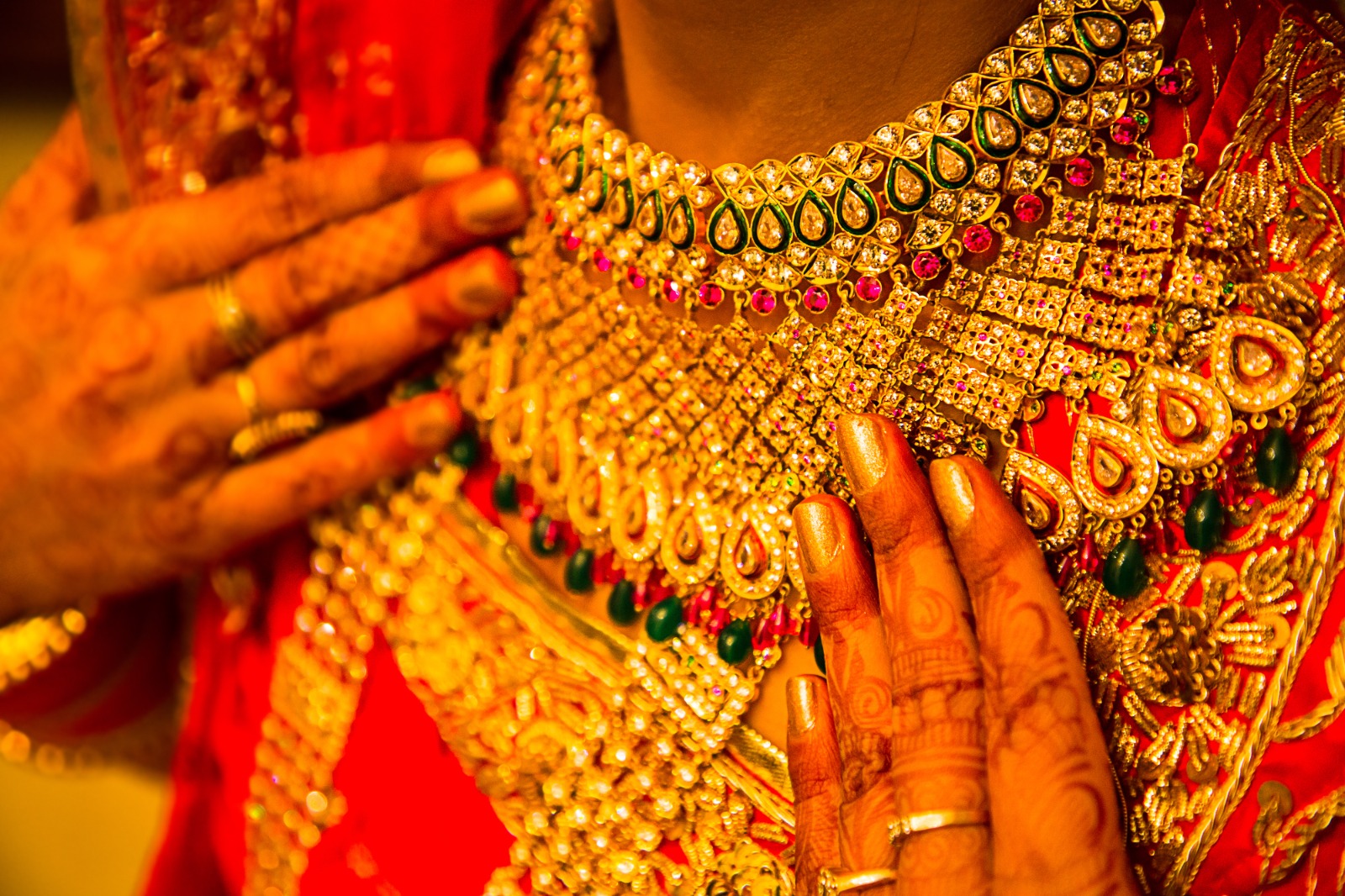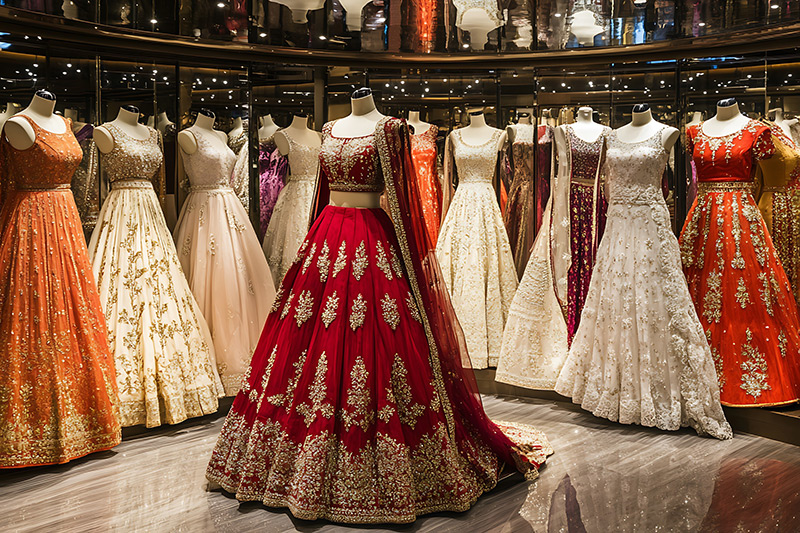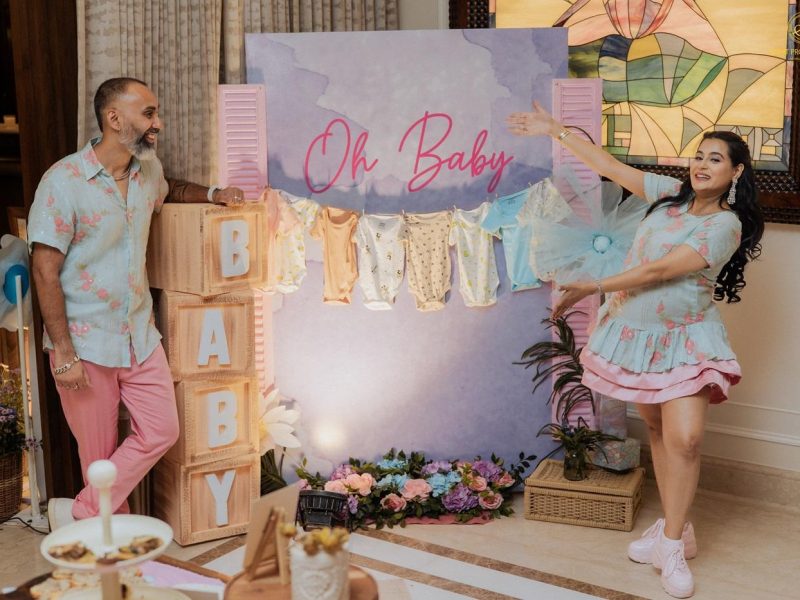Traditional Indian jewellery is back and how. From the tribal to the temple jewellery, vintage pieces such as jhoomars and jhumkas, hathphool and Chandbalis are much in vogue
India boasts a rich legacy of jewellery making and today traditional jewellery has a modern spin: Ornaments are light and reasonably priced. “The designs are much better, with the advent of technology. They (ornaments) are unique, affordable and come mostly in antique finish and not very in the face yellow gold look or bling,” says Anshika Vohra, a young bride in Gurugram.
Every Indian household has jewellery: as part of tradition and culture, as investment and as a style statement. “It is a marker of my cultural identity, heritage, social status and also has religious significance such as my mangal sutra, toe rings, and nose rings invoke auspiciousness and protection. It’s also a means of my personal expression and fashion statement,” says Sangita Singh, a 52-year-old resident of Noida.
Recently acclaimed artist and journalist Manisha Gawade launched a book on traditional Indian jewellery, written by her late sister Dr Alka Raghuvanshi on the occasion of the latter’s 63rd birth anniversary. Titled “A Rendezvous with Traditional Indian Jewellery” Gawade who curated this book shares, “I know we all have heard the slogan -Diamonds are forever, coined by the De Beers marketing campaign in 1947. The most successful marketing campaign of its times, the slogan was recognizable across America, and inspired popular culture in various ways, including the film Diamonds Are Forever in 1971. But then let’s not forget that it was an advertising campaign at the end of the day. People in India since the days of the Rishi munis (sages) and even before have always known to be smarter. Every Indian home will always have gold Jewlery to back them up with. Every bride is forever given the metal from either side of the family as an asset even if there is financial trouble (just in case).” She shares her personal example of her own earlier jewellery purchases being of Kundan but as time went by and she understood that so much of it will just be wasted if at any point one had to sell or exchange it, she decided to buy more South Indian gold pieces to make better investments.
India has a culture of jewellery making of more than 5,000 years. If you see any statues, sculptures in temples etc, you may still find figures without clothes but always with the jewellery which shows ornaments were far more important to wear than clothes, says Rajiv Arora- Founder of Amrapali Jewels, a jewellery house founded in 1978 that produces and distributes tribal, fine and uncut gemstone jewellery. Arora along with Rajesh Ajmera, school friends and history buffs, realised the historical significance of jewellery, particularly Indian tribal jewellery. Setting off on an exploratory tour into the hinterlands of Rajasthan, they found that jewellery, like food, dialect changes every 100km and served as a clear marker of caste and class. Says Arora- “Every caste wears a different jewellery – a Bishnoi woman will wear a different nose ring from a Jaat woman to the Meena woman to the Gujjar woman to the Bhil and Pahadi women wear a nose pin which is very big in size. So we can identify just by seeing a nosepin which community she belongs to.” He adds that in ancient times, jewellery acted as an erotic enhancer and there was heightened focus on feminine energy while surprisingly in Mughal and Rajput period, it was the man who was loaded with jewelry.
Traditional jewellery is headlined by gold. “In Indian tradition, gold has been for centuries associated with prosperity, purity, and auspiciousness. Gold is more than just a metal; it is a treasured tradition passed down through generations, frequently employed as a sign of familial heritage and wealth preservation. Additionally, silver holds its own unique place in Indian jewellery traditions. Silver is often associated with purity, tranquility, and healing properties,” says Yash Agarwal, Creative Director, Birdhichand Ghanshyamdas Jewellers.
There are other attributes that define traditional Indian jewellery and distinguish it from its western counterpart. Says Rani Komal Jain, founder SMARS whose Ram Sita kada was a rage on social media recently, “The metal gold is the most prominent look of traditional while coloured stones and diamond are significant in contemporary. The work and intricacy of jewellery is the second distinguishing feature because modern jewellery is minimalist and lightweight, dainty while Indian is maximalist and heavy. Our motifs are inspired by temples and artistic designs, Ajanta and Ellora. Western is understated while traditional is visible and one of a kind.” Her brand is into creating traditional jewellery at affordable prices (under Rs 10,000) in antique finish and they opted for gold because gold works everywhere in India. A diamond may not work in East India or a Kundan may not work in south India but gold works everywhere. Says Jain- “Because of the hike of gold price, everybody cannot afford gold and yet everyone loves to wear it. The Gen Z don’t want to wear chunky gold 22 karat which is very yellowish or block their money in heavy purchases of gold. That is why our pieces are very mattified and give an antique look. Our pieces are priced reasonably, and the volumes are high. Two years back when we started, we received two orders a day and 50 a month. Today I receive 5,000 orders a month and have a team of 30, all women. She says what sets them apart is the finishing, quality and intricacy/ says Jain- “Every piece is done well and the finishing is done with 1 micron gold plating. So, it’s not a roadside one that gives skin allergies. For those who are not very clued into jewellery, cannot even make out if it’s real or imitation.”
There are many variants of imitation jewellery in the market today. German silver ornaments, gold covered items, gold plated ornaments in copper or silver or alloy metals of various combinations, light weight articles of fibre or synthetic origin, paper made jewellery, antique imitation jewellery etc. are a few of them. Usually, imitation ornaments are much cheaper compared to gold items. They carry a price tag in the range of about 1/10th to 1/5th price of gold articles depending upon the material and craftsmanship of the fancy ornaments. They are lighter in weight and therefore much easier to wear or remove.
Leading brands such as Kalyan Jewellers, Tanishq, Zaveri Pearls, Senco Gold & Diamonds, The House of MBj, Birdhichand Ghanshyamdas Jewellers do a lot of traditional jewellery. Amrapali, Jaypore, SMARS do affordable versions of real jewellery. “Jewellery in Indian culture context as well as in religion is a profound art form that goes beyond mere adornment. Since the Harappan era it has served as an embodiment of identity, spirituality, and cultural heritage. From intricate designs to the use of precious metals and gemstones, each piece of jewellery carries a story and serves as a symbol of tradition. It truly narrates the story of civilisations and is hence an important part of the historic footprint,” says Manisha Gawade.
There are ornaments that cover ‘HEAD-TO-TOE’ such as Maang Teeka & Maang Patti, Jhoomar for head; Jaadanagam for hair; Jhumkas, Balis, Studs, hoop, drop, dangles for ears; Nose pin, Nose ring for nose; Bangles and Kangan/Kadas, Hathphool for hands; Kamarband/Odiyum for waist; Payal and Toe Ring for feet. Aayush Soni – Managing Director, The House of MBj, a Kolkata based jewellery brand, founded in 1897, shares his views on the most coveted traditional pieces currently, “Kamarbandh or waistband, Haram which is an extended chain with intricate patterns that is often called Rani Haar – meaning “Queen’s necklace”; Maang Tikka, a forehead ornament; Jhumkas and Chandbalis with their bell-shaped design and Bangles and bracelets decorated with carvings, designs, gemstones, or enamel work are my top 5 picks of traditional Indian jewellery.“
How should a buyer choose jewellery amongst the plethora of pieces in the market? When it comes to selecting jewellery, there are certain helpful dos and don’ts that you should remember. Try to find timeless items that can be handed down from generation to generation without ever going out of style, says The House of MBj’ Aayush Soni. These classics are always a good investment because they never lose their value or versatility. Another good tip is to buy jewellery that can be altered or redone so that it always matches your style or the occasion. That means keeping pieces looking fresh while sticking with what makes them special. Moreover, think about getting pieces with removable parts so you can mix and match different looks together. Therefore, this will provide even more use for your money and make sure that every outfit has its own special touch of elegance.
Maintaining traditional jewellery requires a mix of care and attention to ensure its longevity. Clean your jewellery regularly to remove dirt, oils, and residue that can dull its shine. Use a soft, lint-free cloth to gently wipe the surface of the jewellery. For intricate designs, use a soft brush to reach crevices and corners. Avoid exposing your traditional jewellery to harsh chemicals, including perfumes, hairsprays, and cleaning agents. These substances can damage the metal and gemstones over time. Keep your traditional jewellery in a clean, dry place away from direct sunlight and moisture. Store each piece separately to prevent scratches and tangling. Be mindful of wearing your traditional jewellery during activities that could cause damage, such as exercising or gardening. Remove jewellery before swimming or bathing to prevent exposure to chlorine and saltwater. Over time, the surface of traditional jewellery may develop minor scratches or dullness. Consider having your jewellery repolished or refinished from the jewellery store to restore its original lustre. When not wearing it, store it in its original box or a soft pouch to protect it from scratches and tarnishing.
Brands like Jaypore have made traditional Indian jewellery accessible and affordable. Says Radhika Chhabra, Creative Head – Jaypore, “Some of their top trending traditional pieces include temple jewellery available in a price range of Rs 2,290 – 25,990. Temple jewellery, originally crafted to adorn the idols of gods and goddesses and then worn by royal dancers and patrons, has a vibrant history. It’s a heartfelt homage to the intricate craftsmanship of South India. It is slightly modernized in today’s time by using stones and giving everyone a chance to own what was previously only for the royals. Others include Kundan (Rs 1,790 – 22,990), Tribal jewellery (Rs 990-54,990), Jodhpuri Filigree Rs 2,990 – 6,990 and Meenakari (1,490-19,990). Tribal Jewellery is an Art found in urban culture, nature, or traditional tribal patterns and materials used are those found locally, with content and quality varying among the different cultures, and artisans. The colours are inspired by nature – the rich blues of turquoise and lapis lazuli, the glowing reds of carnelian and coral, the creamy whites of pearl, and the toasty warm hues of amber. In its truest form, filigree is composed of gold or silver wires interwoven to create a delicate, lace-like structure. Meenakari comes from Jaipur, where the craft of enamelling was further developed and improved.”
Finally, jewellery should be an extension and an expression of yourself. It should tell your story without you having to say a word.
Price Chart
As per Indian culture, gold jewellery is considered the most precious and invaluable metal. Although the fluctuating gold prices have never lost the sheen of gold, it has definitely made the alternatives for gold jewellery very popular. The demand for fashion and imitation jewellery has been increasing rapidly for the past few years and has further increased with the prices of gold rising sharply. The table below gives an idea of price of these ornaments in 22 Karat gold as well imitation counterparts
| Jewellery Item | Real Gold (22 Karat) Price Range | Imitation Price Range (Gold plated/Oxidized Silver/Sterling Silver/kundan) |
| Maang Teeka | ₹40,000 – ₹2,20,000 | ₹800 – ₹10,000 |
| Maang Patti | ₹6,000 – ₹15,000 | ₹1200 – ₹3000 |
| Jhoomar | ₹1,50,000 – ₹2,00,000 | ₹5,000 – ₹30,000 |
| Jhumkas | ₹30,000 – ₹3,50,000 | ₹1000 – ₹5000 |
| Balis | ₹30,000 – ₹80,000 | ₹1,500 – ₹10,000 |
| Studs | 18 karat ₹6,000 – ₹1,50,000 |
₹1,000 – ₹8,000 |
| Nose Pin | ₹5,000 – ₹1,20,000 | ₹500 – ₹5,000 |
| Nose Ring | ₹5,000 – ₹1,20,000 | ₹500 – ₹5,000 |
| Bangles | ₹60,000 – ₹4,00,000 | ₹5,000 – ₹40,000 |
| Kangan/Kadas | ₹80,000 – ₹3,00,000 | ₹7,000 – ₹50,000 |
| Hathphool | ₹70,000 – ₹2,50,000 | ₹6,000 – ₹40,000 |
| Kamarbandh | ₹7,0,000 – ₹65,00,000 | ₹3,000 – ₹20,000 |
| Payal | ₹13,000 onwards | ₹2,500 – ₹15,000 |
| Toe Ring | ₹5,000 onwards | ₹500 – ₹3,000 |




